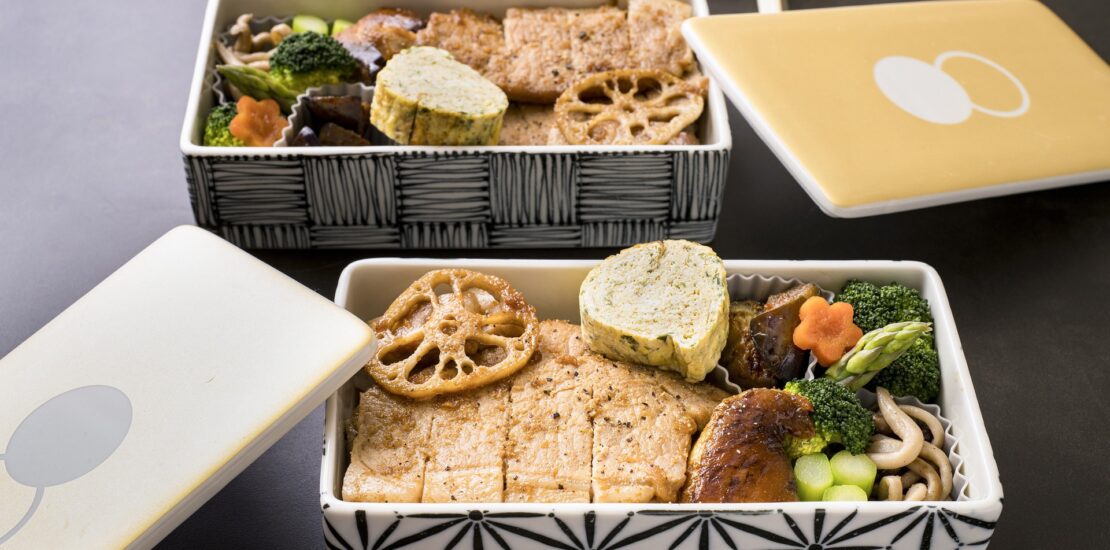Looking to wow your co-workers or friends with your very own homemade bento? Whether you’re hoping to impress, save a little cash, or have a nutritious midday meal, look no further for the best resources on getting started.

Whether you were first introduced to Japanese bento in your favorite childhood anime, or have encountered a Westernized version in your favorite Japanese restaurant back home, most feel that this boxed lunch makes a delicious impression. If you’re ready to start making your own, here’s my best advice on how to get started.
Stock Your Kitchen With Bento Box Essentials

First things first, before diving into creating the perfect boxed lunch, you’ll first need to find the necessary supplies to get you started! The most important thing you’ll need is a bento box. Luckily, if you’re in Japan, there’s about a 99% chance you’ve already encountered them while shopping or running errands.
Before picking out your bento box, it’s important to consider what type of lunches you like to eat. Are you more of a salad-at-lunch type of person? Do you like eating soups? Do you prefer to heat your lunch before eating it? These questions will be handy when deciding on the right bento box for you.
For those who don’t have access to a microwave during lunchtime and like the look of sleek and minimal designs, a metal bento box is a great option! This circular steel bento box from Ikea is reasonably priced and great for packing simple lunches. If salads are a regular lunchtime choice, this stackable salad bento is perfect for keeping ingredients separate until it’s time to chow down. Other places to find bento boxes are in 100-yen stores, supermarkets, department stores, and even in specialized shopping districts like Kitchen Street.
Beginner-Friendly Bento Recipe Resources

When I first moved to Japan, one of my biggest goals was to learn how to cook Japanese food, especially the food I could pack into an Instagrammable-worthy bento box. Learning how to cook takes some time and effort and we all learn differently.
For visual learners, I suggest finding a few cooking channels on Youtube and cooking along with the videos. Cooking with Dog is a great resource and has quite a few bento recipes and tutorials that give visually stunning results! This channel has been around since 2007 and I’ve been using the recipes in my weekly dinner and bento rotation for many years.
Classes also are even more helpful since there’s an instructor present to help with any questions or methods you may have trouble with. Typically classes are themed around a specific meal or confectionary, so choose a class that caters to your specific tastes. ABC Cooking Studio is perfect for anyone with Japanese skills who are interested in investing time into classes. I’ve taken a few classes with ABC Cooking Studio and have been subtly surprised at how much I learned in the course. They offer trial courses for first-timers for as little as 550¥ as well as one-time courses for around 3,500¥.
For bookworms who like to also study Japanese, one of my favorite ways to learn new recipes and work on my Japanese reading skills is to study Japanese cookbooks. Even cooking magazines have simple recipes that are worth checking into! Once I have my selected cookbook, I’ll usually tab my favorite recipes and take 30 minutes or so to translate them later. If it takes me too long to grasp the recipe I’ll often use Google Translate as a backup. Everyone studies differently, but for me, this is my preferred way to learn Japanese while also learning how to cook!
Shiori’s Easy Morning Bento is my favorite bento cookbook because it includes a ton of simple and easy-to-read recipes for those just starting.
How to Pack Your Bento

When it comes to packing foods into your bento, the most important things to think about are color variation and balance. Below are a few tips I’ve come across that help with bento packing:
-
If you’re packing rice in the same container as other dishes, make sure the rice is completely cooled before packing in other food. The hot temperature of the rice can ruin some dishes, so basically, don’t pack anything until it’s cooled down! This counts for side dishes and main dishes as well.
-
Make sure to add decorative-but-edible bits and bobs to your bento. For example, a leaf of lettuce under fried foods like karage. This can help absorb some oil depending on what you’re packing as well as add a splash of color.
-
Use silicone cups to separate side dishes that may have juices that could seep into other dishes and rice.
-
If you’ve got open areas after filling your bento with the dishes you’ve prepared, fill in those open areas with vegetables like cherry tomatoes or pickles to add even more color variation!
For outside packing and wrapping, it all boils down to personal preference! Some people like to use furoshiki or bento wrapping cloths, insulated lunch bags, and even cute bento-sized canvas totes!
No matter what you decide to wrap your bento with, you’ve now got the tools and tips to start your bento-making journey!



